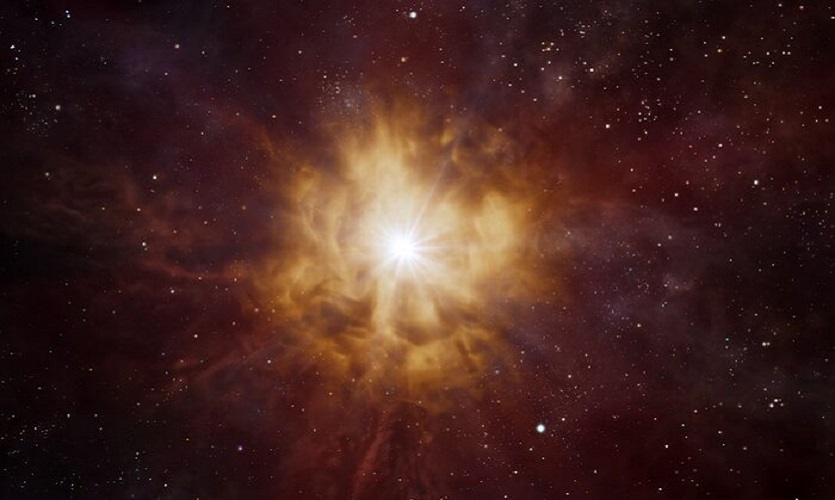Cosmic explosions offer new clue to how stars become Black Holes

Scientists have witnessed for the first time exactly what happens to the most massive stars at the end of their lives.
Most very large stars explode in a fiery supernova explosion that leaves behind a neutron star in a process frequently witnessed by Earth’s most powerful telescopes.
But some – the most massive, 30 times the size of the Sun or more – are believed to undergo a less visible metamorphosis and transform into black holes without the same cosmic fireworks produced by smaller stars.
Now, a group of astronomers have described what may be one of these in detail, by detecting unusual behaviour in the explosion of a star within a galaxy 1.2 billion light years from Earth.
Big surprise
"Normally, when a massive star dies, almost the entire star is blown apart by the explosion” explains Dr Daniel Perley, an astrophysicist at Liverpool John Moores University and lead author on a paper accepted for publication in the Astrophysical Journal.
“What we witnessed in this case is something quite different: a much briefer explosion caused by collisions between a small amount of material exiting the star at extremely high speeds with other material that had built up in its vicinity before it collapsed.”
While collisions of this nature are not entirely unusual, the big surprise was what happened next.
"Once the collisions were over, we had expected to see signs of the bulk of the star dissipating into space after being blown apart. But we saw no sign of this – suggesting only a tiny fraction of the star was released in the explosion. We infer that the rest of it collapsed inward to produce a massive black hole."
'Death throes'
Although this explosion was very unusual, the team, which includes scientists from Weizmann Institute of Science in Israel, the Oskar Klein Institute in Sweden, and Caltech and Berkeley in the US, believes this scenario may actually be quite common.
They say that as a very massive star enters its "death throes", it starts shedding material at high speeds in dense "winds" or in much smaller eruptions. The result is that the space around the star is filled with enriched gas in the months or even years before the final explosion. However, the amount of material released varies from star to star.
In this case, telescopes got lucky because there was a particularly large amount of pre-existing material around the star, which made the explosion very bright and easy to find.
“The same scenario could happen far more frequently and not produce enough light for us to be able to detect most of the time,” added Dr Perley, who is based at the LJMU Astrophysics Research Institute and collaborated on the research with Professor Chris Copperwheat.
“In fact, if a similar explosion occurred without an environment rich in gas, we might never know it even happened.”
Liverpool Telescope's role
The explosion was discovered by the Zwicky Transient Facility at Palomar, California and tracked by the Liverpool Telescope on La Palma – a robotic scope which reacts immediately to events in the night-sky – the Hubble Space Telescope, the Nordic Optical Telescope, the Keck Observatory and NASA’s Neil Gehrels Swift Observatory.
- Dr Perley and collaborators unveiled their findings at a media conference for the American Astronomical Society in California at 9.15pm (GMT).


